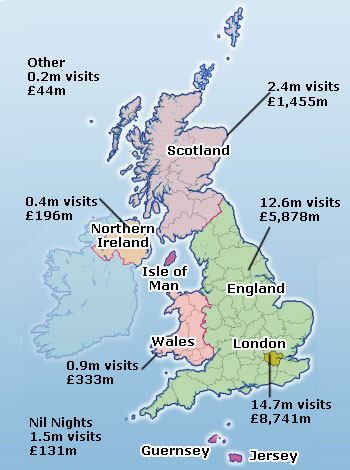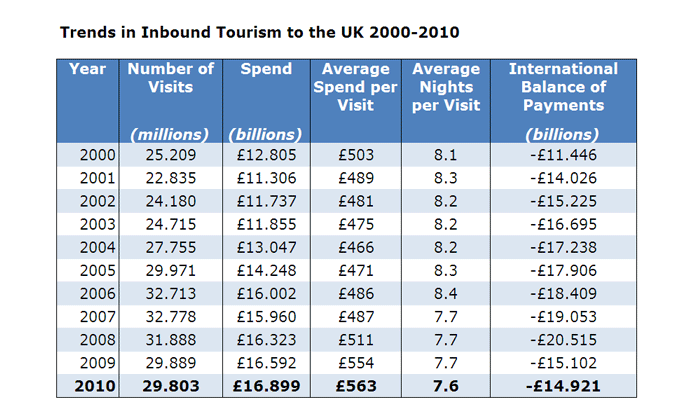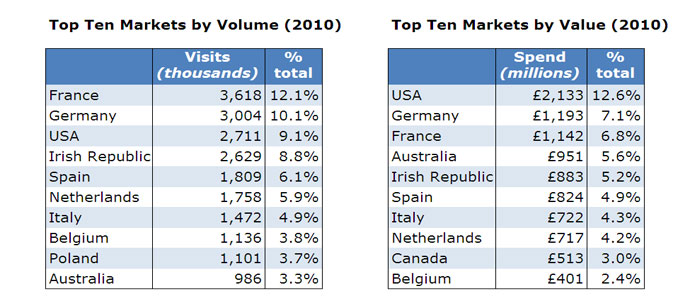Introduction to the concept and position of marketing research
Marketing management requires enough and related information to enable planning and achieving winning decisions about a marketing scheme. The marketing manager’s experience in the milieu of marketing, coupled with the data obtained from marketing research and other sources within the organisation aids guide decision-making in union with other departmental managers (Stevens, 2006).
As such, in order to enable collection of information required for making objective marketing decisions, the marketing manager has to borrow a lot from an intuitive knowledge of marketing research. This research paper explores a number of themes in the role of secondary data in marketing research.
Marketing research is a technical process of collecting and processing information to aid decision-making in marketing management. As the adage goes, knowledge is power. Such phrases are being echoed in the business milieu. Knowledge is obtained from information, which comes from data, which comes from marketing research. The world is increasingly becoming a multifarious place. Changes are happening at an alarming rate, and with the growth of information technology, consumers are open to more and more information on which to ground their decisions (Zikmund & Babin, 2009).
Marketing research can be categorized as basic or applied. Basic marketing research is more general and simply is geared towards obtaining and generating information about aspects of the marketing system. There is little or no emphasis on how to utilize or relate this information in the marketing management process after the research is completed. The research is not usually meant for a particular organisation but serves a broader function. This category of research is grounded on a supposition and a theory and is carried out methodically and entirely (Smith & Albaum, 2005).
Contrary to basic research, applied research is aimed at enabling management make informed decisions about a particular aspect. This research is done to resolve a specific problem and is more precise to the organisation (Hair, et al, 2005).
Apart from the two broad types of marketing research, there are three other categorizations of marketing research according to the key roles they play. The first one is descriptive research. This type of research shows a contemporary situation. The emphasis is on offering the specific organisation with past and cotemporary data about the consumer, industry, and environment and the effects or significance of this data to the company under study.
The second type of marketing research according to function is diagnostic research. This research diagnoses the impact of a particular event in a given circumstance. For instance, this could be the cause and effect of developing a novel stratagem, or even a mere price change (Wenn, Stevens, & Loudon, 2006).
The third type of research based on the role it plays is predictive research. This is used to foretell the results of new plans under development. Emphasis is laid on predicting the future and singling out new avenues to leverage (Malhotra, 1996). Generally, marketing research plays two main roles. First, it offers the organisation with information concerning consumer demand for products and services. Secondly, it awards customers with the opportunity to express their views and needs, hence, affecting decision-making to ascertain they have access to the products and services they want (Wiid & Diggines, 2010).
One of the fundamental phases of the marketing research process is the collection of data. There are mainly two types of data used in a marketing research. These include primary data and secondary data. Primary data are particularly gathered to work out the marketing problem or chance facing management (Grover & Vriens, 2006). This type of data is gathered from scratch by use of surveys, observation or experimentation. On the other hand, secondary data are data that previously exists, as the information had been formerly collected for some other purpose, not for the particular study. Examples of secondary data include sales records, periodicals, books, cost information, distributor’s reports, as well as government agencies’ reports (Smith & Albaum, 2005).
Secondary data are categorized according to its source: internal and external data. The organisation overseeing the research report comes up with internal or in-house data. These data include data collected from invoices, financial analyses, sales reports, and research surveys that were formerly conducted by the organisation. Internal secondary data are gathered by the organisation during its normal business transactions. It is not gathered to resolve the particular marketing problem.
On the other hand, external secondary data are preferably gotten from original publications as they usually offer information concerning the data collection technique, the range of the survey, and the sample size used during the study (Partzer, 1995).
Why organisations should spend time gathering secondary data prior to undertaking primary research
Organisations should spend time gathering secondary data prior to undertaking primary research primary data due to a number of reasons. The first step in data collection is to determine whether data already exists that can illuminate the problem and or solve it. This can go far in saving a significant amount of time and resources, because primary data is time-consuming and dear. In addition, secondary data can be used for various ways.
First, it is used in formulating the decision making-problem. Secondly, it is used in proposing methods and types of data for achieving information needs (Malhotra, 1996). Thirdly, it can be used to monitor the organisation’s external environment; critical factors are the economy and the business, competitors, consumers, technology and suppliers. This data are usually found in secondary sources. In addition, secondary data give the base for final decision-making. At times, there is no adequate time or resources for a primary research investigation. As such, the final decision ought to be made on the grounds of the secondary data. Lastly, secondary data establishes trends in longitudinal research studies (Sarstedt & Mooi, 2011).
Apart from saving time and money, the gathering of secondary data instead of primary data has a number of advantages. First, its mode of gathering is easy compared to that of primary data. This is because it does not involve going top the filed to conduct surveys or experiments. Secondly, it enables the collection of primary data. In addition, it can be more correct than primary data. This is because information on events that happened in the past can be gotten truthfully from secondary sources. Lastly, secondary data offer comparative data that make needed for a more informative analysis of primary data (Grover & Vriens, 2006).
Advantages and disadvantages of secondary data
Although secondary data saves time and money, the gathering of secondary rather than primary data has some inbuilt problems and disadvantages. It may prove difficult to trace the desired data from many resources. In addition, processing or adapting the data to fit the problem may be tedious. It may also be challenging to determine the precision and dependability of the data obtained from secondary sources. In addition to these inherent problems, secondary data in marketing research has a number of disadvantages. First, the secondary data does not automatically apply to the particular problem under study.
This is because the data was gathered for other, different purposes. In order to minimize this limitation, it is crucial for the research to identify the motive behind the initial research in which he or she is drawing his or her data. This will help in avoiding the use of irrelevant data. Secondly, the accuracy of secondary is debatable. This is occasioned by the fact that research errors may have occurred at the initial data collection and analysis. These errors will be carried on to the decision-making process after the completion of the research. In addition, the business environment is highly dynamic; hence, secondary data get outdated quickly.
Another limitation of secondary data is that different sources define and categorize terms and definitions in a different way. This phenomenon is, especially, true in the marketing arena where the same term is defined in different ways. Lastly, secondary data employ different measures. As such, in comparing secondary data from various sources, the researcher ought to note the measure that is used. For instance, one source may use the per capita income of a family while another source may use the mean income per family.
How can the effect of these disadvantages be minimized?
In order to mitigate the limitations of secondary data in marketing research, the researcher requires keeping a few things in mind. The researcher should know who gathered the data. The source of the data is decisive in determining its accuracy. There are a number of trustworthy sources that researches can rely. These include federal agencies, most state agencies, as well as large commercial market research firms. Another consideration to carry in mind when using secondary data is the purpose of the study in which the data was gathered. (Wenn, Stevens, & Loudon, 2006)
Data is usually collected for some reason. Grasping the motive behind the initial research may offer ideas are assessing the quality of the data In addition, in order to minimize the limitations of secondary, it is essential to verse oneself with the information that was collected. The time when the information was collected is also notable as it helps mitigate chances of irrelevance occasioned by outdated data.
In addition, the research should examine whether the information he or she is using is consistent with other information. A lack of uniformity between secondary data sets should be a sign of caution. The researcher should find for the probable causes of the incongruity. This may be in the form of sample size, time factors or sampling style. Where possible, the researcher should evaluate the dependability of the studies as a ground for determining which, if any, study should be deployed for decision-making (Stevens, 2006).
Information available from the Office of National Statistics
As mentioned above, one of the trustworthy sources of obtaining secondary data to use in marketing research is government agencies. One such non-ministerial agency in the United Kingdom is the Office of National Statistics (ONS). This is the administrative department of the United Kingdom Statistics Authority. The office is directly answerable to the Parliament of the United Kingdom. The Office of National Statistics was created on April 1, 1996 (ONS, 2011). This followed the merging of the Central Statistics Office (CSO) with the Office of Population Censuses and Surveys (OPCS). The passing of Statistics and Registration Service Act of 2007 saw the United Kingdom Statistics become an independent body April 1, 2008 (ONS, 2011).
The ONS collect and publishes statistics of different kinds such as demographic, economic or social and related to the United Kingdom for both nationwide and local levels. The department acts as the office of the National Statistician. The latter doubles up as the UK Statistics Authority’s CEO and main statistical adviser to the UK’s National Statistics Institute. The headquarters of ONS is in Newport, close to the UK Intellectual Property Office and Tredegar House. However, there still exists another main office in Tichfield in Hampshire, as well as a small office in the country’s capital, London (ONS, 2011).
The main mandate of ONS is to produce and publish varied information concerning Britain. This information is used for social and economic policy-making. It also used to depict a portrayal of the country with as it grows (ONS, 2011). The information is usually produced in means that enable evaluation with other societies and economies. A large portion of the data that policy-makers rely is produced by ONS via combining a decennial population census, samples, and surveys. It also analyzes data created by businesses and firms such as the National Health Service and the record of births, marriages and deaths ONS, 2011).
The ONS collect data from various fields such as population, government, business and energy, economy, and labour market. The department also gets its data from travel and transport, agriculture and environment people and places, as well as children, education and skills. The findings of the ONS are published its findings every year in the Blue Book. This document contains the data concerning homeland and national product, income and expenditure of the U.K. and is accessible as hardcopy and web version too (ONS, 2011).
The ONS are charged with the responsibility of producing various economic and social statistics such as the labour market, the UK balance of Payments, producer and consumer prices, and information related to population and migration. Other statistics produced by ONS include significant events such as births, morbidity, marriages and death, government output and activities, as well as the country’s National Accounts such as GDP, and National Income and Expenditure (ONS, 2011).
Current trends in tourism to the UK by overseas visitors
The United Kingdom is currently rated sixth in terms of the most visited destination by international tourists (Visitbritain, 2011). However, the country is losing this market share. The worldwide economic recession has had a considerable impact on the number of overseas visitors to the United Kingdom. The worldwide economic disaster had an unusually real influence on inbound tourism to the UK.

In the period before July 2008, the United Kingdom was home to close to 9 million business visitors, whereas, in the year before April 2005, the figure was 6.6 million (Visitengland, 2011). The latter figure represented a 26% decline. Contrary to this, over the same period, the number of inbound holiday visitors to the U.K had increased by 1%. Inbound tourism to the U.K reached its peak in 2007. This was after a phase of continued growth (Visitbritain, 2011).

A number of factors affect the current trends in the United Kingdom. One of them is exchange rates. These are closely tied to economic performance. In the last couple of years, the U.K has benefited much from a weak pound. This phenomenon makes the U.K affordable (Visitbritain, 2011). The currency markets remain somewhat unpredictable, with episodic rumours that the Eurozone may mislay some of its members if measures to bring down the size of national debt cannot be fully delivered. Another factor that affects inbound visitors to the U.K is the country’s strengths and weaknesses. The U.K is ranked fourth with regard to its to a holistic nation brand (Marvell, 2005).
Top of the list are USA, France, and Germany. Cultural assets are among the country’s valuable tourism assets. However, the country lags behind in terms of the Welcome perception. It is ranked 13th out 50. Another defining strength is education. The U.K universities are a popular choice for foreign students. They attract more than 50, 000 overseas students every year (Visitbritain, 2011).

The proportion of young visitors in the U.K has been decreasing over the years. This can be tied to the aging population of many key inbound markets. In 1994, 16% of visitors to the U.K were on the age bracket of 16-24. A decade and a half later, in 2009, the share had fallen to 12%. Contrary to this, the proportion of the visitors aged more than 55 rose from 13% to 18% over the same epoch (Visitbritain, 2011).
Conclusion
In conclusion, value has been taking a centre stage in the tourism trends of visitors to the U.K (Visitengland, 2011). Many visitors are adopting a back-to-basics attitude in search of quality at the right price. This is happening amidst the economic ruins. Another trend is social media. This has seen an increase in novel ways of sharing such as online reviews and user-generated content. In addition, mobile phones have seen an increase in visitors due to use of mobile devices in planning and booking trips and accessing location-specific destinations.
References
Grover, R., & Vriens, M., 2006. The handbook of marketing research: misuses, and future advances. London: SAGE.
Hair, J. F., Celsi, M., Samouel, P., & Page, M., 2005. Marketing research within a changing information environment. London: McGraw Hill.
Malhotra, N. K., 1996. Marketing research: an applied orientation. New York: Prentice Hall.
Marvell, A., 2005. Travel and tourism: AS level for AQA. London: Heinemann.
Office of National Statistics (ONS), 2011.Overview of roles and responsibilities. Web.
Partzer, G. L., 1995. Using secondary data in marketing research: United States and worldwide. New York: Greenwood Publishing Group.
Sarstedt, M., & Mooi, E., 2011. A concise guide to market research; the process, data, and methods. Berlin: Springer.
Smith, S. M., & Albaum, G. S., 2005. Fundamentals of marketing research. London: SAGE.
Stevens, R. E., 2006. The marketing research guide. London: Routledge.
Visitbritain, 2011. Trends in inbound to the U.K. 2000-2010. Web.
Visitengland, 2011. Top ten markets by value. [Online]. Web.
Wenn, B., Stevens, R. E., & Loudon, D. L., 2006. Marketing research: text and cases. London: Routledge.
Wiid, J., & Diggines, C., 2010. Marketing research. New York: Juta and Company Ltd.
Zikmund, W. G., & Babin, B. J., 2009. Essentials of marketing research. New York: Cengage Learning.